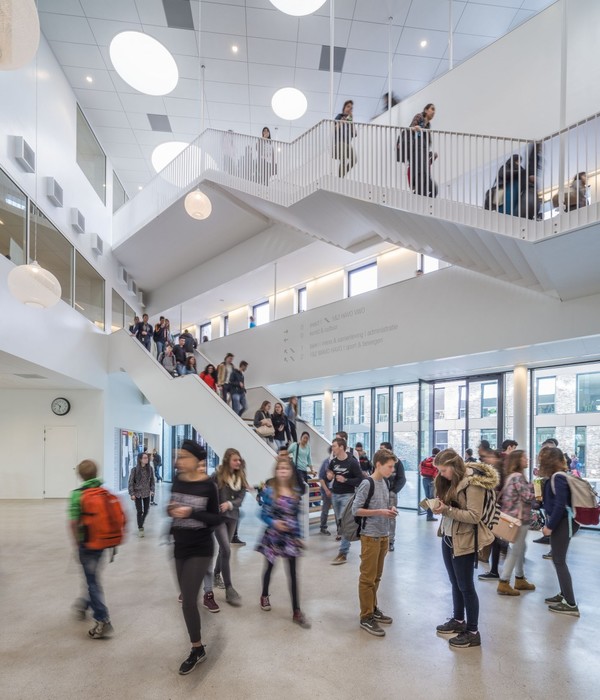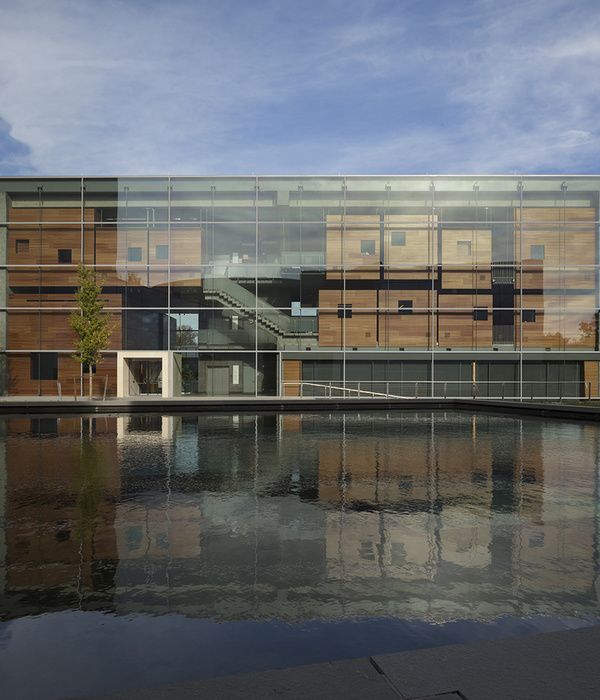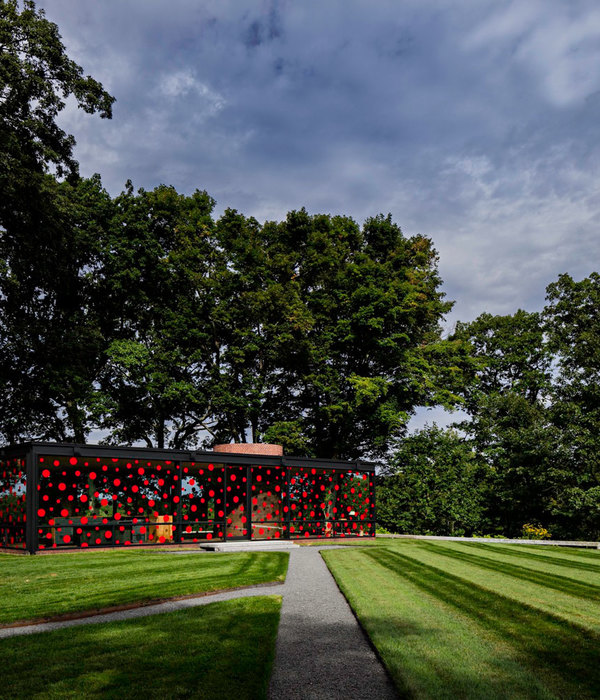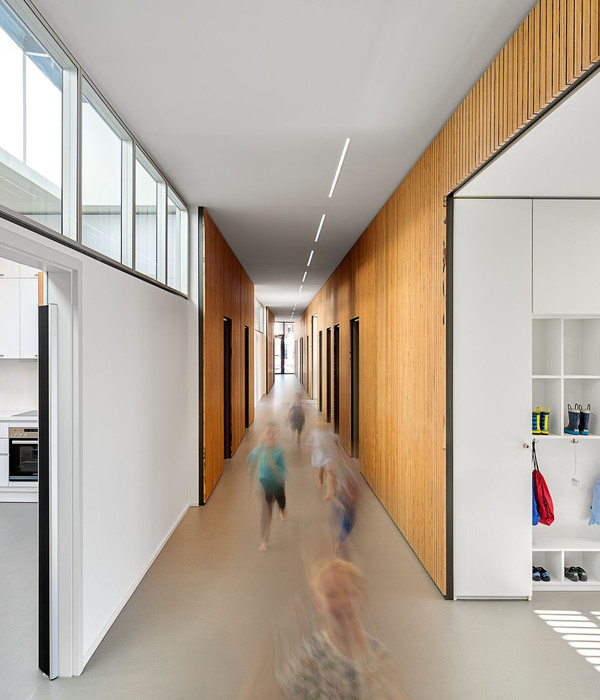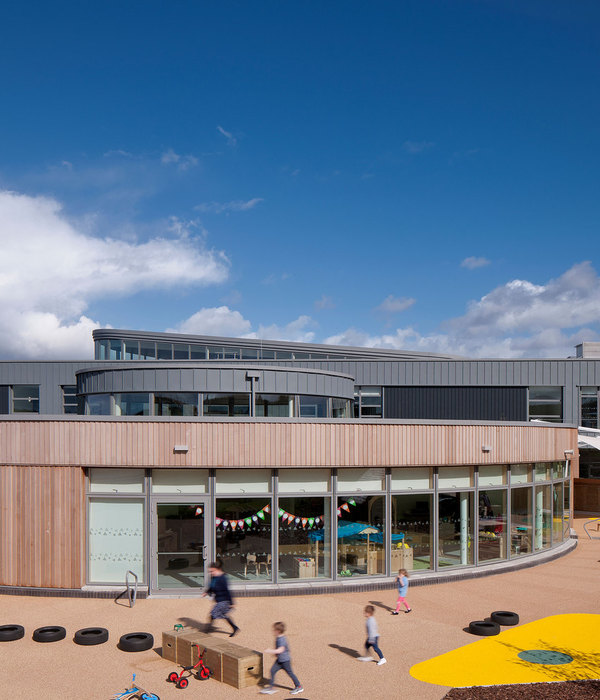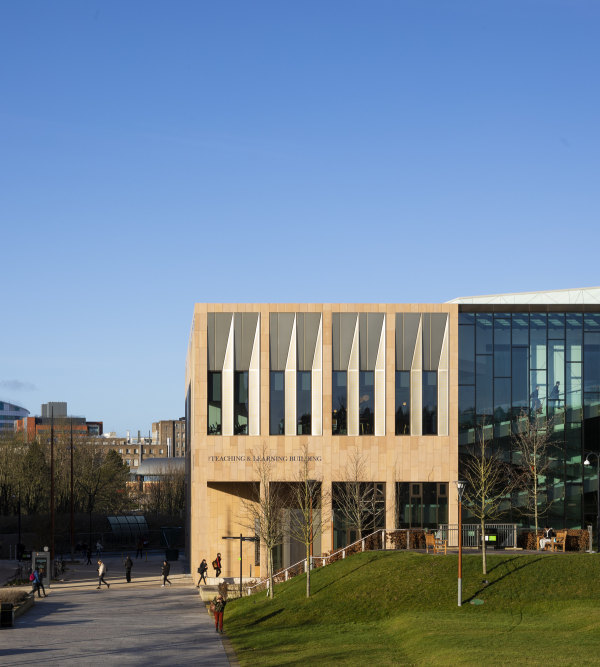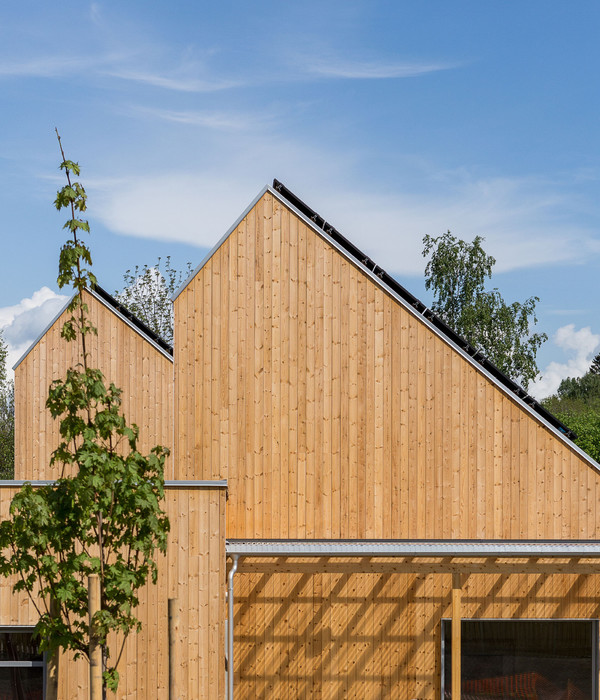SōL Harris/Day Architecture was tasked with designing the new Lake Elementary School with ample learning opportunities for students in Hartville, Ohio.
Lake Elementary School was envisioned to be a compact, efficient building where every square foot facilitates learning. The district had a goal for each space to be utilized in three different ways, ensuring their facility would be flexible enough to evolve with the continual changes in education.
A two-story student dining ‘commons’ space welcomes students into the building and serves as a hub with academic wings and “specials” radiating outward. The scale of the large volume is broken into different zones that can be used for learning when not being used for lunch. A large collaboration stair overlooks student dining and doubles as additional learning space.
The academic areas are accessed via a main path that extends from the commons. Transitional areas that would otherwise be underutilized space have been captured to create informal group spaces along the way. The design re-imagines classroom relationships by pushing them all together allowing spaces to easily interact with one another.
Different styles of classrooms were developed to cater to the different teaching and learning styles intended to occur. Some are open spaces meant for interaction and collaboration. Some are closed spaces that cater to focused learning. The diverse and flexible spaces are intended to maximize engagement, facilitate movement, and encourage collaboration among students and teachers. In lieu of dedicated corridors, classrooms are grouped around shared spaces filled with flexible furniture. Glass garage doors provide the ability to use these spaces as an extension of the classroom or interconnection between multiple classrooms. Views through the doors also bring in natural light, provide a sense of community, and reinforce a culture of collaborative learning.
Classrooms use both wall mounted and mobile interactive monitors. Screens communicate wirelessly with teacher or student devices. When moveable walls are opened, content can be transferred to the joining classroom’s monitors, allowing information to be easily shared for immersive learning.
The design incorporated features that allowed the building to achieve LEED Gold Certification. Daylight, natural materials, and a color palette centered on nature create an environment that feels more like home resulting in students who feel more comfortable and ready to learn. The use of color also provides wayfinding, while giving each grade level a unique identity. Blues, greens, and oranges are strategically used based on their psychological effect on developing minds.
Design: SōL Harris/Day Architecture Design Team: Melinda Scalfaro, Burt Marzley, Julie Whyte, Regina Leone Photography: Todd Biss Productions
14 Images | expand images for additional detail
{{item.text_origin}}

